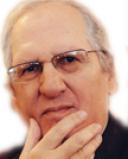Neuroticism
Normalcy, Neurosis and Psychosis: What Is a Mental Disorder?
Who determines what is "normal" and "abnormal"?
Posted March 11, 2010
 This is another response (see my first post) to the very public concerns of Dr. Allen Frances regarding the proposed revisions to the American Psychiatric Association's Diagnostic and Statistical Manual of Mental Disorders (DSM-V), slated for publication several years from now. Dr. Frances, a psychiatrist, seems suddenly alarmed about the profound implications of diagnosis of psychopathology or so-called abnormal psychology. But for many mental health professionals, including myself, this issue has been worrisome since the earliest days of psychiatry and clinical psychology. So I wonder why Dr. Frances, who previously oversaw the DSM-IV Task Force, seems so fired up now.
This is another response (see my first post) to the very public concerns of Dr. Allen Frances regarding the proposed revisions to the American Psychiatric Association's Diagnostic and Statistical Manual of Mental Disorders (DSM-V), slated for publication several years from now. Dr. Frances, a psychiatrist, seems suddenly alarmed about the profound implications of diagnosis of psychopathology or so-called abnormal psychology. But for many mental health professionals, including myself, this issue has been worrisome since the earliest days of psychiatry and clinical psychology. So I wonder why Dr. Frances, who previously oversaw the DSM-IV Task Force, seems so fired up now.
Attempting to differentiate and distinguish between that which is "abnormal" or "pathological" in human behavior or experience and what is "normal" has always been a dangerous and dubious enterprise. Historically, such distinctions are based on various paradigms of psychopathology, particularly a statistical model, to help discern which symptoms or behaviors deviate and fall outside the range of what is typical, usual or "normal." But deciding just where this invisible dividing line lies between "normal" and "abnormal," sometimes between "sane" and "insane," has always been an imprecise science to say the least. In reality, psychodiagnosis, much more so than medical diagnosis, is and always has been more an art than a science. Part of the reason this is so has to do with the fact that, in reality, there is no clear boundary between "normal" and "abnormal." We each live in close proximity to the artificial line created by society, psychiatry and psychology separating "sane" from "psychotic," "normal" from "neurotic." All of us straddle that non-existent border at times, depending in part on our experiences and circumstances. Many flirt with or cross over this threshold temporarily, returning sooner or later to the land of the "normal." And some never recover from this departure from "normalcy." But if what we mean by "normal" is defined solely by how well a person conforms to society, does what is expected of them, and does not stand out too conspicuously from the herd, what becomes of individuality? Creativity? Self-expression? Indeed, it could be argued that much of what we deem maladaptive, abnormal or pathological behavior patterns are, at some conscious or unconscious level, acts of rebellion rooted in anger about not being allowed to authentically be oneself in society.
Psychiatrists, psychologists and other mental health professionals receive expert training to differentiate that which is "normal" from "abnormal," who has crossed over this arbitrary boundary between so-called mental health and mental disorder. But what do we actually base such potentially life-changing or stigmatizing decisions upon? It is important to bear in mind that good diagnosticians do not take such decisions lightly. Nor do they decide on any particular psychiatric diagnosis without some careful deliberation and consideration of multiple questions: of which, the first and foremost has long had to do with the degree of debilitation present. How has this person's day to day ability to function been affected? Is there significant impairment in occupational, academic or interpersonal functioning? And what is the severity of subjective suffering or distress being experienced by the patient in the form of his her symptoms? In certain cases, the individual may not report subjective suffering, but his or her behavior is either chronically self-destructive and/or results in negative social consequences and excessive suffering in others. Psychodiagnosis is a very useful way of recognizing and conveying the pervasive presence of such problems. But it should never be about merely labeling or determining who deviates from the social norm. It is rather, when properly understood and employed, the first step toward providing therapeutic help to a suffering human being.
"Mental health" is not the complete absence of symptoms such as anxiety and depression. The difference between mental health and mental disorder is merely a matter of degree, duration and debilitation. Psychodiagnosis should never be about someone simply being different. Idiosyncratic. Eccentric. Unusual. Cultural and religious differences must always be taken into consideration. It is not a means of imposing conformity to some collective norm which suppresses diversity and personal freedom. It is about understanding suffering, and providing assistance for that suffering. The primary question in deciding whether a particular patient suffers from psychopathology (i.e., a so-called mental disorder) is, and must always remain, whether his or her symptoms, to cite the current DSM-IV-TR, "cause clinically significant distress or impairment in social, occupational, or other important areas of functioning." In other words, "if it ain't broke, don't fix it." Of course, you can ask: What does "clinically significant" mean? Well, it means that the level of debilitation or suffering goes well beyond the pale of what is normal or commonplace. So, in this sense, it is the psychodiagnostician, guided by the diagnostic manual, who ultimately determines how much suffering, impairment or debilitation is typical for a given situation, and how much is abnormal or excessive. Obviously, this is an enormous and weighty responsibility. And that crucial determination is based on what we call "clinical judgment," paired with the skillful use of a diagnostic manual like the DSM-IV-TR, in which there are quite specific, concrete critieria required to meet even the minimum threshold for assigning the diagnosis of any mental disorder. If patients do not fully meet this criteria, they should receive no diagnosis. As I tell my graduate psychopathology students, "If the shoe fits, then the patient should wear it. But never force the shoe to fit."
One of Dr. Frances' concerns is that the forthcoming DSM-V will significantly lower that minimum threshold, allowing clinicians to diagnose mental disorders that would previously not have been diagnosed or labeled as abnormal. (See, for example, his most recent posting on ADHD.) He is understandably and rightly concerned that the line dividing "normal" and "abnormal" is being moved, potentially making more human behaviors and experiences (by DSM-V's definition) abnormal, aberrant or pathological. This dangerous trend clearly must be guarded against. And, in this regard, Dr. Frances' timely "call to arms" is much appreciated. But I have to point out that this man-made dividing line is constantly moving, and has always been blurry. Refusal to adjust this line based on research findings and clinical experience runs the risk of missing or mistreating some very serious mental health issues, such as pathological anger or rage. (See my prior post on the new proposedDSM-V diagnosis of Posttraumatic Embitterment Disorder.) On the other hand, it forces ever-greater numbers of the general population into the ranks of the "abnormal." And into the offices of psychiatrists for medication and psychologists for psychotherapy.
But then, as Freud famously observed, we are all at least a little neurotic. Jung understood that everyone has complexes. Existential frustration, anger, sadness, despair and anxiety are feelings every person experiences at some point in some measure. Just because someone doesn't meet the criteria for a diagnosable mental disorder only makes him or her "normal" insofar as mental suffering and destructive behavior will always be an inescapable part of the human condition.
Psychopathology is always relative. Receiving a psychiatric diagnosis does not necessarily mean the cause or etiology of the disorder is known or agreed upon. It doesn't necessarily mean one has some "neurological deficit," "brain disease" or "biochemical imbalance." Nor does it typically necessitate pursuing one particular type of treatment or therapy over another. However, refusal to diagnose by clinicians can be a kind of naive denial, resulting in not taking someone's suffering sufficiently seriously to intervene--sometimes with catastrophic consequences. When that mental suffering--whatever its source may be--manifests in debilitating, intolerable psychological and/or physical symptoms or destructive behaviors, a psychiatric diagnosis formally recognizes the need for additional support and possible professional treatment. Which of these two options is truly more humane?


